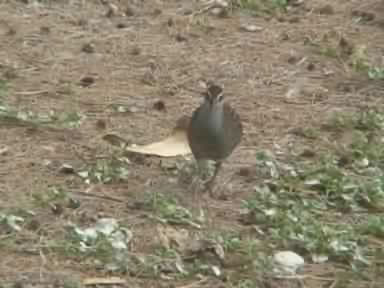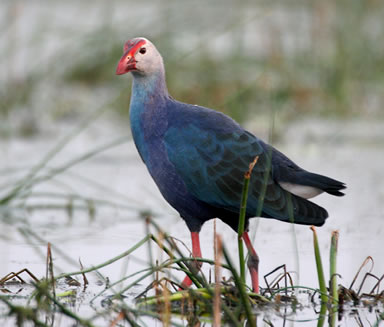Rallidae - Rails, Crakes, Coots

Facts about creatures
- Home
- Animal Classification
- Animal Habitats
- Amphibians
- Arthropods
- Bats
- Birds
- Carnivorans
- Cetaceans
- Chordates
- Crustaceans
- Dinosaurs
- Diprotodonts
- Elephants
- Fish
- Golden Mole
- Insects
- Lagomorphs
- Mammals
- Mammal Teeth
- Marsupial Mole
- Metamorphosis
- Mollusks
- Primates
- Reptiles
- Rodents
- Ruminants
- Soricomorphans
- Tenrec
- Tetrapods
- Vertebrates
Rallidae – Rails, Crakes, Coots
Rallidae is a family of small to medium-sized birds that include rails, crakes, coots, and gallinules (also known as moorhens, swamphens or marsh hens).
They live on every continent except Antarctica, often in wetlands or in dense forest.
Many species of Rallidae live on islands. Many island species have lost the ability to fly because they evolved without the threat of predation.

With the introduction of predators, such as pigs and cats, to their islands, many flightless species have become extinct.
Humans have caused the extinction of many Rallidae species.
Hundreds of species of Rallidae became extinct when humans colonized Polynesia, Micronesia and Melanesia in the South Pacific.
Today, humans hunt Rallidae for their food. Humans also eat Rallidae eggs.
Many living species of Rallidae are now endangered.
Some species of Rallidae destroy crops and are therefore considered pests.
Rallidae range from about 5 inches to about 25 inches long.
They are often black, brown or grey, and they tend to blend in with their environment.
Unlike many other Rallidae, coots, members of the genus Fulica, tend to be easy to see. They spend much of their time swimming in the open in lakes and ponds, where their black feathers are highly visible.
Gallinules, which often have brown, black and white plumage, also swim in the ocean and are also easy to spot.
The purple gallinule (Porphyrio porphyrio) has shiny purple, green and blue feathers.
Some Rallidae have brightly colored bills.
Males and females of the same species often have similar coloration.
The bodies of Rallidae are often flattened on the sides, which makes it easy for them to move around in dense vegetation. Many species have long necks, which are also flattened.
Some coots and gallinules have a fleshy extension, known as a frontal shield, on their upper bill.
Rallidae are usually omnivorous. They eat invertebrates, seeds and fruit.

They have strong legs and short, rounded wings.
They prefer to run away from predators, rather than fly away from them.
When they are excited, they may fly in a fluttering manner, with their legs dangling beneath them.
Some species of Rallidae are migratory and can fly for long distances.